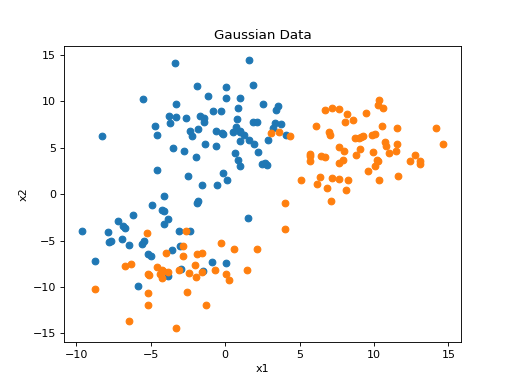spkit.data.gaussian¶
- spkit.data.gaussian(N=[100, 100], ndist=3, means='random', sigmas='random', return_para=False, **kwargs)¶
Generate a 2-class dataset from a mixture of gaussians
Sample a dataset from a mixture of gaussians
- Parameters:
- N: list or two int, default =[100,100]
vector that fix the number of samples from each class
example N = [100,100], 100 samples for each class
- ndist: scalar, default=3
number of gaussian for each class. Default is 3
- means: array, shape (2*ndist X 2), default=’random’
vector of size(2*ndist X 2) with the means of each gaussian.
- sigmas: array , default=’random’
A sequence of covariance matrices of size (2*ndist, 2)
New in version 0.0.9.7: Added to return parameters
- return_para: bool, default=False
if True, return the parameters
- Returns:
- X: 2d-array
data matrix with a sample for each row
shape (n, 2)
Changed in version 0.0.9.7: shape is changed to (n, 2)
- y: 1d-array
vector with the labels
Changed in version 0.0.9.7: shape is changed to (n, )
- (ndist, means, sigmas): parameters
if return_para is True
See also
Examples
#sp.data.gaussian import numpy as np import matplotlib.pyplot as plt import spkit as sp np.random.seed(3) X, y = sp.data.gaussian(N =[100, 100],ndist=3, means='random', sigmas='random') np.random.seed(None) plt.figure() plt.plot(X[y==0,0],X[y==0,1],'o') plt.plot(X[y==1,0],X[y==1,1],'o') plt.xlabel('x1') plt.ylabel('x2') plt.title('Gaussian Data') plt.show()






